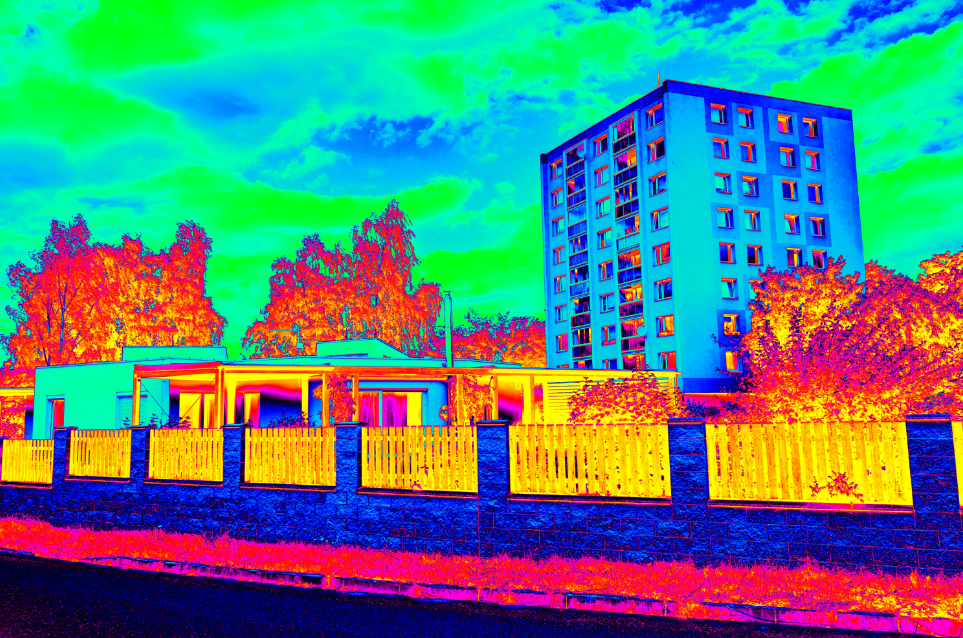
As the UK strives towards achieving its ambitious net-zero emissions targets, retrofitting existing buildings for improved energy efficiency becomes paramount. One crucial aspect of this process is understanding the thermal efficiency of your buildings. Here at LivGreen we are committed to promoting sustainable solutions. In this blog post, we delve into the significance of thermal efficiency and how it plays a vital role in better understanding your buildings and therefore retrofitting your buildings for a net-zero future.
What is Thermal Efficiency?
Firstly, we need to understand what thermal efficiency is and why this is so important for Net Zero goals. Thermal efficiency refers to a building's ability to retain heat during the colder months and keep cool during warmer periods. It is a measure of how effectively a building envelope (walls, roof, windows, etc.) prevents heat transfer between the interior and exterior environments. Understanding the thermal efficiency of a building is crucial in identifying areas of heat loss or gain, enabling targeted retrofit interventions.
The Importance of Thermal Efficiency in the UK
As mentioned in several of our previous blogs, the UK has a vast number of older buildings, which tend to be less thermally efficient compared to newer constructions. These buildings often suffer from inadequate insulation, draughts, and outdated heating systems, resulting in significant energy wastage and high carbon emissions. Improving the thermal efficiency of existing buildings is, therefore, a key strategy for the UK to achieve its net-zero goals.
Benefits of Improved Thermal Efficiency:
Energy Savings: Buildings with enhanced thermal efficiency require less energy for heating and cooling, resulting in reduced energy bills for occupants. This not only improves affordability but also lowers demand on the energy grid, contributing to a more sustainable and resilient energy system.
Increased Comfort: Improving thermal efficiency enhances indoor comfort by minimising temperature variations, eliminating cold spots, and reducing draughts. Occupants can enjoy consistent and comfortable temperatures throughout the year, improving well-being and productivity.
Health and Well-being: Retrofitting for thermal efficiency often involves addressing issues such as condensation, dampness, and poor indoor air quality. These improvements can lead to healthier living environments, reducing the risks of respiratory problems and promoting well-being.
Property Value: Buildings with higher thermal efficiency tend to attract higher property values. Retrofitting for energy efficiency provides a competitive edge in the real estate market, attracting potential buyers or tenants who prioritise sustainability and reduced energy costs.
Assessing Thermal Efficiency:
Assessing the thermal efficiency of buildings involves conducting energy audits and thermal imaging surveys to identify areas of heat loss or gain. These assessments provide valuable insights into the building's thermal performance and guide retrofit decision-making.
Retrofitting for Net Zero:
Understanding the thermal efficiency of buildings is instrumental in planning and implementing retrofit measures to achieve net-zero emissions. Some effective retrofit strategies include insulation upgrades, window replacements, efficient heating systems, renewable energy integration, and smart building technologies. By targeting the areas of highest heat loss or gain, retrofitting interventions can maximise energy savings and carbon reductions. Check out a full list of our services here
As the UK focuses on achieving net-zero emissions, understanding the thermal efficiency of buildings becomes vital. LivGreen, a retrofit decarbonisation partner, recognises the significance of improving thermal efficiency to retrofit existing buildings sustainably. By prioritising energy efficiency measures, such as insulation upgrades Read more of our blogs here

.png)
Leave Your Comment Here